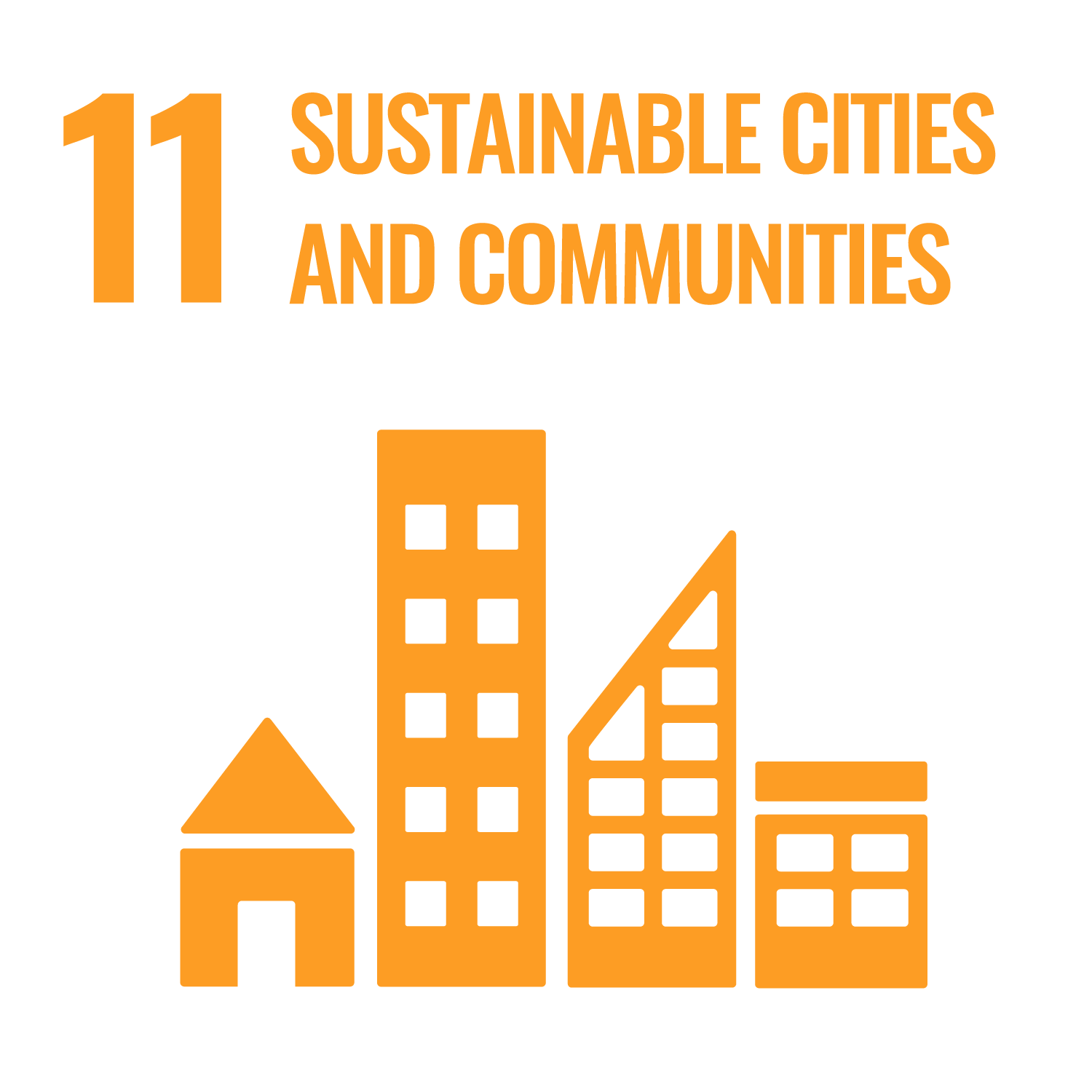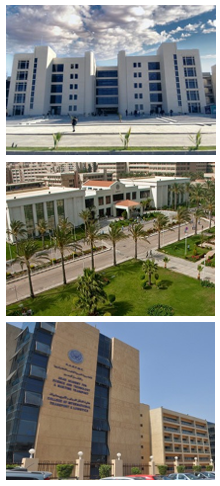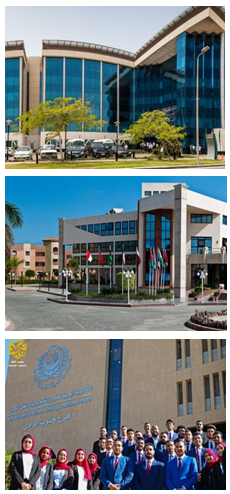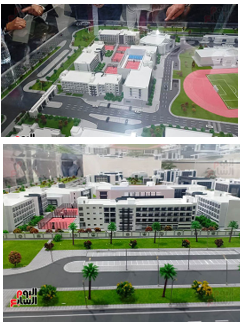 Goal 11. Sustainable Cities and Communities
Goal 11. Sustainable Cities and Communities
11.4.9 Building on brownfield sites
2023-2024
AASTMT is at the forefront of driving sustainable urban development and responsible land use, directly addressing the principles of "Building on brownfield sites, where possible." AASTMT has demonstrated a profound commitment to transforming underutilized, derelict, or post-industrial urban land into vibrant, productive community assets. These initiatives showcase a holistic approach that integrates advanced research, practical student projects, and community engagement to build the resilient, inclusive smart cities of tomorrow.
The Annual "Urban Regeneration & Smart Futures" Symposium
AASTMT's College of Engineering and Technology hosted its annual symposium focusing on the critical challenges of modern urban planning. A central theme 2023-2024 was the strategic redevelopment of post-industrial zones within major cities. The event brought together experts to discuss innovative techniques for site remediation, dealing with legacy solid waste and pollution, and converting these areas into mixed-use developments.
The symposium emphasized how revitalizing brownfield sites is a powerful tool for curbing urban sprawl, reducing pressure on virgin land, and enhancing the existing road network and public transport infrastructure. Keynote speakers presented case studies on projects that successfully integrated new housing developments with public parks and commercial spaces, turning neglected areas into hubs of community life and economic activity. This initiative directly supports the core of sustainable urbanization.
Workshop on "GIS and Remote Sensing for Sustainable Site Selection"
In collaboration with international partners, AASTMT conducted a professional workshop for municipal planners and engineers on using Geographic Information Systems (GIS) to identify and prioritize brownfield sites for redevelopment. The training focused on analyzing historical land use, environmental data, and proximity to existing infrastructure like rail transit and utilities.
This initiative provides public and private sector professionals with the tools to make data-driven decisions, ensuring that redevelopment efforts are targeted where they can deliver the most significant social, economic, and environmental benefits. This capacity-building effort is crucial for implementing a systematic approach to urban regeneration and making the goal of building on brownfield sites a scalable reality for the entire region.
https://aast.edu/en/deaneries/csp/alex/contenttemp.php?page_id=39200107
Transforming Underutilized Land: AASTMT's Sustainable Campus Expansion
The institutional strategy of AASTMT demonstrates a profound commitment to sustainable urban development, which is operationalized through a policy of urban regeneration centered on brownfield site selection. This approach is a core tenet of the institution's comprehensive urban planning and city planning framework, showcasing a deliberate choice to repurpose existing urban land rather than contribute to unchecked urbanization. This policy inherently addresses legacy environmental challenges, including the remediation of land affected by pollution, solid waste, and historical sewage systems, thereby restoring the natural land cover.
Furthermore, the institution's development model is predicated on seamless integration within the broader city infrastructure. Site selection criteria rigorously evaluate connectivity to the existing road network and access to public transportation and public transport systems, promoting sustainable commuting and contributing to the creation of smart cities. This holistic planning extends to enhancing the overall urban landscape through the creation of accessible public spaces, while also considering the positive impact on the local housing market.
A critical component of this strategy is its focus on resilience and disaster prevention. The evaluation process for each site includes a thorough assessment of risks associated with natural disasters, such as vulnerability to floods and seismic activity related to earthquakes, ensuring that all new construction contributes to a safer and more resilient urban environment. Moreover, the policy mandates the preservation and thoughtful integration of any on-site cultural heritage and historical buildings, underscoring a commitment to maintaining the unique character of the community. This integrated methodology confirms that AASTMT's approach to campus development is a direct and impactful contribution to building inclusive, safe, resilient, and sustainable communities in alignment with SDG 11.
2022 - 2023
Transforming Underutilized Land: AASTMT's Sustainable Campus Expansion
AASTMT prioritizes environmental sustainability by selecting brownfield sites for its campuses, repurposing existing land to preserve natural habitats and reduce environmental impact. This approach supports urban revitalization, transforming underutilized areas into educational hubs that contribute to regional economic and social development. By restoring degraded land, AASTMT aligns with sustainable urban planning principles, enhancing infrastructure and promoting a high quality of life for students.
Environmental Sustainability: Building on brownfield sites aligns with AASTMT's commitment to environmental sustainability. By repurposing existing land instead of developing greenfield sites, AASTMT reduces the need for additional land conversion and preserves natural habitats. This approach helps minimize the environmental impact of campus construction and promotes responsible land use.
Urban Planning and Revitalization: Selecting brownfield sites for campus locations allows AASTMT to contribute to urban revitalization efforts. By transforming underutilized or abandoned areas into educational institutions, AASTMT can help revitalize surrounding neighborhoods and contribute to the economic and social development of the region. This approach aligns with the principles of sustainable urban planning and promotes the efficient use of existing infrastructure and resources.
Restoration Potential: Brownfield sites often have the potential for restoration and remediation. By choosing these sites, AASTMT can contribute to the restoration of degraded land and address environmental challenges associated with brownfield sites.
It is important to note that the specific criteria and processes used by AASTMT to select brownfield sites for its campuses may vary. AASTMT may consider factors such as accessibility, infrastructure availability, community engagement, and regulatory requirements when evaluating potential locations. AASTMT is always interested in preserving the environment through planning and urban construction to achieve the quality of life for students.



2021 - 2022
The Arab Academy for Science, Technology & Maritime Transport (AASTMT) has selected the locations of its campuses based on building on brownfield sites. AASTMT's decision to choose brownfield sites for its campuses is likely driven by several factors, including environmental sustainability, urban planning, and the potential for restoration and revitalization of these sites.
Environmental Sustainability: Building on brownfield sites aligns with AASTMT's commitment to environmental sustainability. By repurposing existing land instead of developing greenfield sites, AASTMT reduces the need for additional land conversion and preserves natural habitats. This approach helps minimize the environmental impact of campus construction and promotes responsible land use.
Urban Planning and Revitalization: Selecting brownfield sites for campus locations allows AASTMT to contribute to urban revitalization efforts. By transforming underutilized or abandoned areas into educational institutions, AASTMT can help revitalize surrounding neighborhoods and contribute to the economic and social development of the region. This approach aligns with the principles of sustainable urban planning and promotes the efficient use of existing infrastructure and resources.
Restoration Potential: Brownfield sites often have the potential for restoration and remediation. By choosing these sites, AASTMT can contribute to the restoration of degraded land and address environmental challenges associated with brownfield sites.
It is important to note that the specific criteria and processes used by AASTMT to select brownfield sites for its campuses may vary. AASTMT may consider factors such as accessibility, infrastructure availability, community engagement, and regulatory requirements when evaluating potential locations. AASTMT is always interested in preserving the environment through planning and urban construction to achieve a quality of life for students.
Building on Brownfield Sites on AASTMT webpage


